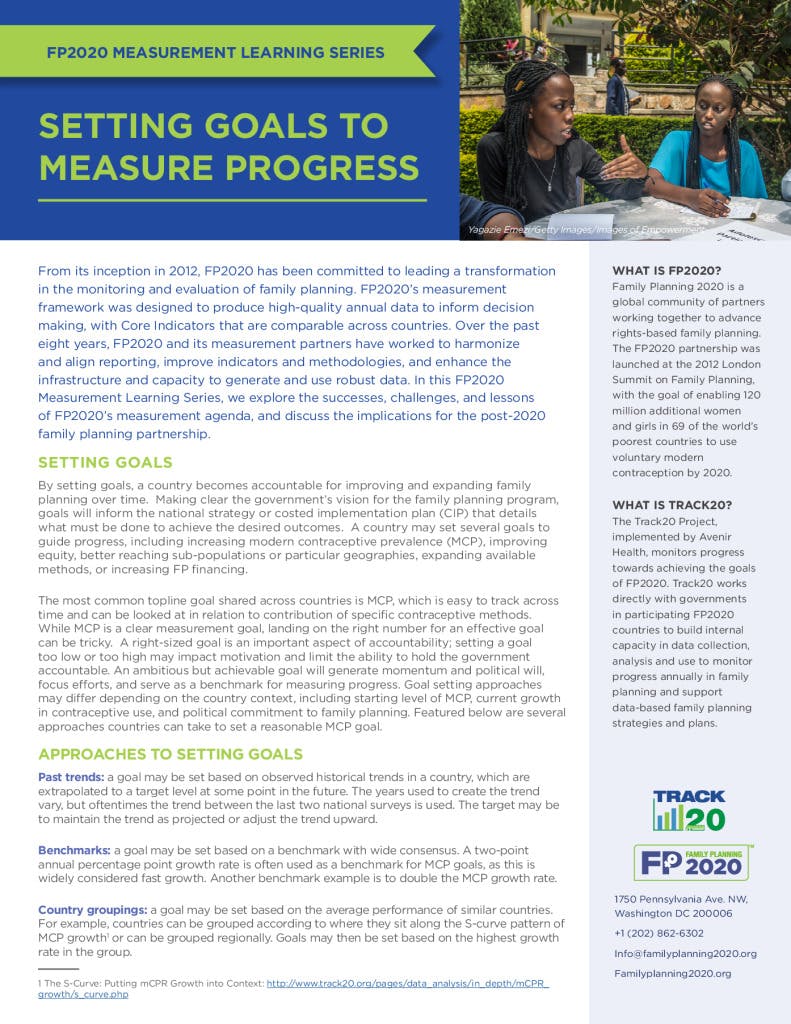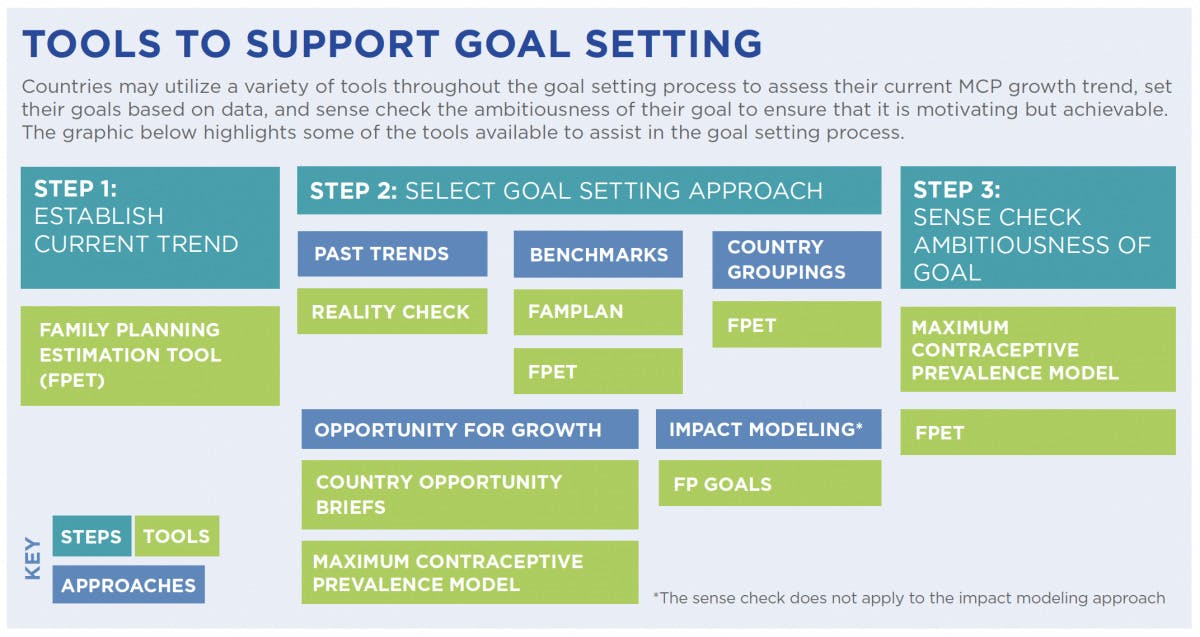
Measurement Learning Series
Goals & Goal Setting
By setting goals, a country becomes accountable for improving and expanding family planning over time.
Focus Area
Goals will inform the national strategy or costed implementation plan (CIP) that details how to achieve desired outcomes.
A right-sized goal is an important aspect of accountability; setting a goal too low or too high may impact motivation and limit the ability to hold the government accountable. An ambitious but achievable goal will generate momentum and political will, focus efforts, and serve as a benchmark for measuring progress.
Tools for Goals & Goal Setting
The Family Planning Estimation Tool
The Family Planning Estimation Tool (FPET) is a web application that uses all available survey data to produce annual estimates for key family planning indicators, such as contraceptive prevalence and unmet need for family planning.
Reality Check
Reality Check is a helpful tool that generates data for evidence-based family planning advocacy and strategic planning. It examines the relationship between the Contraceptive Prevalence Rate (CPR) and the population to estimate the resources needed to achieve a future goal and its potential impact.
FamPlan
FamPlan is a tool that helps project the family planning requirements necessary to achieve national goals for addressing unmet needs or desired fertility rates. Its purpose is to help set achievable goals, plan for the required expansion of services to meet program objectives, and evaluate different approaches for reaching those goals.
The Projecting Subcutaneous and Self-Injectable Use Model
The Projecting Subcutaneous and Self-Injectable Use Model is a web-based tool that predicts the yearly amount of individuals who may use subcutaneous injectables (SC) and self-injectables (SI) until 2030 in FP2020 countries.
Country Opportunity Briefs
The Track20 Country Opportunity Briefs utilize various data sources to identify potential opportunities for family planning. These briefs examine factors such as demand for contraception, availability and accessibility of services, quality, equity, and the overall enabling environment.
FP Goals
FP Goals combines demographic data, family planning program information, and evidence of the effectiveness of diverse interventions to help decision-makers set realistic goals and prioritize investments across different family planning interventions.
Maximum Contraceptive Prevalence Rate Model
The Maximum CPR Model enables policymakers, family planning supporters, and individuals to calculate a country’s highest achievable contraceptive prevalence rate (CPR) for both spacing and limiting purposes. CPR is determined by considering an ideal number of children and significant demographic life events.










